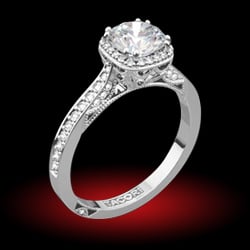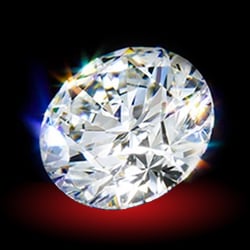Hello and thanks. I know we can ask for certificate of origin of any diamond , but often no one seems to know where it comes from? So how would one assure not to buy a conflict stone. Also treated diamonds that could lower their value.Would GIA , AGS certificate say if it was enhanced? So many questions??? Thanks a lot..
You are using an out of date browser. It may not display this or other websites correctly.
You should upgrade or use an alternative browser.
You should upgrade or use an alternative browser.
conflict diamonds and treated diamonds how not to buy such ?
- Thread starter scarleta
- Start date
- Status
- Not open for further replies. Please create a new topic or request for this thread to be opened.
Regular Guy
Ideal_Rock
- Joined
- Jul 6, 2004
- Messages
- 5,963
no good answers from me, but unless used referred to this already, you may find it helpful reading...
DBM
Shiny_Rock
- Joined
- Oct 24, 2006
- Messages
- 404
Date: 12/20/2006 11:52:05 AM
Author:scarleta
Hello and thanks. I know we can ask for certificate of origin of any diamond , but often no one seems to know where it comes from? So how would one assure not to buy a conflict stone. Also treated diamonds that could lower their value.Would GIA , AGS certificate say if it was enhanced? So many questions??? Thanks a lot..
in all honesty it's such a long chain of distributions that you'd really have to contact the manufacurer of the stone in Antwerp, India, Israel, etc to have a chance of knowing and that's basically not going to happen.
I believe I saw a post by someone from Whiteflash who had a statistic of sorts that like 99% of stones in North America are conflict free...
that's all as far as conflict
as far as treated any good lab certification will let you know that.
JohnQuixote
Ideal_Rock
- Joined
- Sep 9, 2004
- Messages
- 5,212
This may be the information you saw Daniel (from this thread).Date: 12/20/2006 4:02:10 PM
Author: DBM
I believe I saw a post by someone from Whiteflash who had a statistic of sorts that like 99% of stones in North America are conflict free...
- - -
In North America you can buy with high confidence.
The Kimberly Process is to be applauded for dramatically reducing the scope of the issue. Some estimates put rough touched by conflict at less than 1 percent today. But the global diamond industry is vast. Greed is not exclusive to Africa, and rogue elements trade rough of dubious origin where they can. Kimberly Process fraud was uncovered in Brazil and Guyana this year. In early November NGOs were calling for expulsion of Venezuela from KPCS participation. Border controls are tighter in North America, especially post 9/11, but the possibility of corruption in the system exists, even in Canada where “conflict-free” is a national marketing slogan (CDCC). The good news is that Kimberly and Global Witness have estimated that 99.8% of the world’s diamonds are conflict free. Still, unless you walked the diamond yourself from mine to sorting to trading house to cutting factory to parcel buyer to retail outlet, nothing can be 100 percent certain.
As responsible retailers we do our utmost to protect our clients and ourselves. We select our partners with great care. We know the leaders of our primary trading houses and their commitment to the process of certification. Every diamond we bring in is accompanied by written conflict-free guarantees and certification from people committed to the process. We have joined hands and done everything in our power to guarantee our diamonds’ conflict-free provenance for you, just as our conscientious peers do.
Neil Beaty's article has a number of intelligent consumer options. I would add the suggestion to be proactive. As a shopper you can test a retailer’s awareness and commitment to the issue. These four questions are suggested by NGOs Amnesty International and Global Witness.
1. How can I be sure that none of your jewelry contains conflict diamonds?
2. Do you know where the diamonds you sell come from?
3. Can I see a copy of your company’s policy on conflict diamonds?
4. Can you show me a written guarantee from your diamond suppliers stating that your diamonds are conflict-free?
Remember that "conflict-free" just scratches the surface of the issue. The industry works hard to ensure conflict-free provenance for the end-user and for many consumers that is enough. The only drawback is that it overlooks the real issue which is those who still suffer in parts of Africa.
As jewelry companies and consumers we can’t change governments or politics, but we can create commerce and benevolence to help those people. UNICEF is active in Africa. Development diamond initiatives like Rapaport's are evolving. Our company’s chosen charity partner is the WCCCI and we have a program funding relief for African children.
Beyond the protectionist work Kimberly Process, the Patriot Act, NGOs and the CRJP are doing, we believe there must be people-centered answers to help actual humans without industry or red tape in the way.
strmrdr
Super_Ideal_Rock
- Joined
- Nov 1, 2003
- Messages
- 23,295
Well said John.
Personally I feel that more should be done on the exploitation side of the issue.
I think at this time conflict diamonds are pretty well under control.
The vendors giving back is a good start but it really needs to happen further up the chain and a few countries have moved in that direction.
So while not perfect and iv threatened a boycott a couple times it is atleast moving in the right direction.
As DeBeers loses more control over the industry it will move faster in that direction.
Personally I feel that more should be done on the exploitation side of the issue.
I think at this time conflict diamonds are pretty well under control.
The vendors giving back is a good start but it really needs to happen further up the chain and a few countries have moved in that direction.
So while not perfect and iv threatened a boycott a couple times it is atleast moving in the right direction.
As DeBeers loses more control over the industry it will move faster in that direction.
JohnQuixote
Ideal_Rock
- Joined
- Sep 9, 2004
- Messages
- 5,212
Regarding treated diamonds:
Color enhancements can be coatings (temporary, usually done to deceive consumers), or HPHT which is permanent. GE developed High Pressure/High Temperature (HPHT) annealed diamonds. HPHT is a method for influencing the diamond''s color. In 1999 the GIA began accepting these diamonds for grading; they were involved in research with GE at the time. The Federal Trade Commission requires that HPHT must be disclosed, so GIA notes "HPHT Annealed" or "Artificially Irradiated" on grading reports when it is detected. The diamonds themselves are laser-inscribed with the words "HPHT Processed," "Irradiated," or a specific registered name so there is full disclosure. "GE POL" has been inscribed on Bellataire diamonds.
More information on HPHT in this thread: https://www.pricescope.com/community/threads/bellataire.52191/
Common clarity enhancements are laser drilling and fracture filling. Laser drilling was developed in the 1980s. An infrared laser is used to bore fine holes into a diamond in order to selectively target and remove inclusions, or reduce their visibility. This improves the diamond’s apparent clarity grade. Fracture filling is a process where small cracks, feathers, and/or laser drillings in a diamond are filled with a molten, glass-like resin. This makes the cracks almost invisible and improves the diamond’s apparent clarity. You can often see this type of treatment when the diamond is tilted back and forth in unique color changes.
The GIA accepts laser drilled diamonds, and discloses the treatment on the grading report, but will not accept fracture flled diamonds. Some sellers refuse to deal in diamonds with color or clarity enhancements.
Color enhancements can be coatings (temporary, usually done to deceive consumers), or HPHT which is permanent. GE developed High Pressure/High Temperature (HPHT) annealed diamonds. HPHT is a method for influencing the diamond''s color. In 1999 the GIA began accepting these diamonds for grading; they were involved in research with GE at the time. The Federal Trade Commission requires that HPHT must be disclosed, so GIA notes "HPHT Annealed" or "Artificially Irradiated" on grading reports when it is detected. The diamonds themselves are laser-inscribed with the words "HPHT Processed," "Irradiated," or a specific registered name so there is full disclosure. "GE POL" has been inscribed on Bellataire diamonds.
More information on HPHT in this thread: https://www.pricescope.com/community/threads/bellataire.52191/
Common clarity enhancements are laser drilling and fracture filling. Laser drilling was developed in the 1980s. An infrared laser is used to bore fine holes into a diamond in order to selectively target and remove inclusions, or reduce their visibility. This improves the diamond’s apparent clarity grade. Fracture filling is a process where small cracks, feathers, and/or laser drillings in a diamond are filled with a molten, glass-like resin. This makes the cracks almost invisible and improves the diamond’s apparent clarity. You can often see this type of treatment when the diamond is tilted back and forth in unique color changes.
The GIA accepts laser drilled diamonds, and discloses the treatment on the grading report, but will not accept fracture flled diamonds. Some sellers refuse to deal in diamonds with color or clarity enhancements.
JohnQuixote
Ideal_Rock
- Joined
- Sep 9, 2004
- Messages
- 5,212
Thanks Strm. I think the information age is helping awareness and allowing people to better research ways to be proactive.Date: 12/20/2006 6:40:10 PM
Author: strmrdr
Well said John.
Personally I feel that more should be done on the exploitation side of the issue.
I think at this time conflict diamonds are pretty well under control.
The vendors giving back is a good start but it really needs to happen further up the chain and a few countries have moved in that direction.
So while not perfect and iv threatened a boycott a couple times it is atleast moving in the right direction.
As DeBeers loses more control over the industry it will move faster in that direction.
strmrdr
Super_Ideal_Rock
- Joined
- Nov 1, 2003
- Messages
- 23,295
DBM
Shiny_Rock
- Joined
- Oct 24, 2006
- Messages
- 404
- Status
- Not open for further replies. Please create a new topic or request for this thread to be opened.
Share:
The Ultimate Guide to Men’s Wedding Bands: Metals, Fit & Finish The Ultimate Guide to Men’s Wedding Bands: Metals, Fit & Finish - 06/27
The Ultimate Guide to Men’s Wedding Bands: Metals, Fit & Finish - 06/27

Chipped Diamonds: Causes, Risks, and What You Should Do About It
Chipped Diamonds: Causes, Risks, and What You Should Do About It - 06/27






300x240.png)